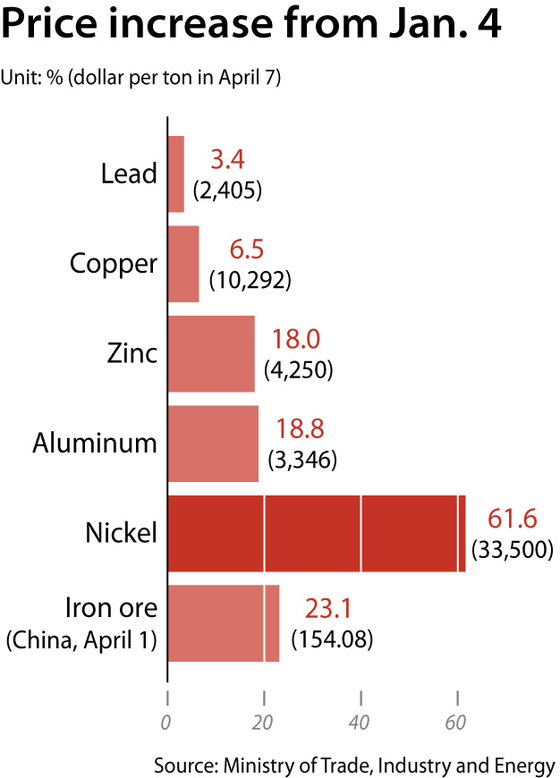Smelting business booms as prices rise, competition struggles
![Employees work at nonferrous metal supplier Nyrstar's plant in Auby, France, on Jan. 7. The French company shut its plant for two months due to soaring electricity costs. [AFP/YONHAP]](https://koreajoongangdaily.joins.com/data/photo/2022/04/11/5539b09e-df5e-4b86-8b4a-f6367f6a0c4c.jpg)
Employees work at nonferrous metal supplier Nyrstar's plant in Auby, France, on Jan. 7. The French company shut its plant for two months due to soaring electricity costs. [AFP/YONHAP]
The smelting business is booming as prices rise and Europe faces an energy crisis.
Higher metal prices are driving up profit margins, though the cost jump may hurt the industry in the long-term if the current trend continues.
Copper and zinc prices have been on a steady rise for over two years. While the pandemic-driven lockdown weighed on the global mining industry, infrastructure plans in the United States and China boosted demand for industrial metals.
Russia's invasion of Ukraine pushed up the already soaring prices. Restrictions on the use of Russian liquefied natural gas hit European smelters hard, which led to a nonferrous metal supply shortage around the globe.
Copper traded at $10,292 per ton on Thursday at the London Metal Exchange, up 14 percent year on year, according to data compiled by the Korea Mine Rehabilitation and Mineral Resources Corporation. Zinc was priced at $4,250 per ton that day, a 51 percent increase on year.

"Byproducts of the smelting process such as gold, silver, platinum and palladium, got more expensive as well," said an industry insider.
The trend helped nonferrous metal suppliers.
In Korea, LS-Nikko Copper produces electrolytic copper and precious metals. Metal processing company Korea Zinc supplies nonferrous metals, such as zinc and lead, and Poongsan Corporation manufactures copper products. LS Cable & System and Taihan Electric Wire are two leading wire suppliers.
Local suppliers came out on top despite cost increases because their product prices were adjusted in line with cost fluctuations. Profit margins improved even as the companies sourced raw materials prior to the price jump.
Yuanta Securities forecast that Poongsan Corporation's quarterly revenue will hit 876 billion won ($714.5 million) in the first quarter this year, with operating profits of 42 billion won. That's a 20.8 percent and 33 percent increase, respectively, compared to the same period last year.
Poongsan Corporation posted a record operating profit last year, driven by the raw material price increase.
The company reported an annual revenue of 2.5 trillion won in 2021, up 32 percent on year. Operating profits surged 144 percent to 234 billion won as well.
Shinhan Investment projected Korea Zinc's revenue in the first quarter to grow 12.8 percent on year to 1.9 trillion won, with operating profit increasing 3.3 percent to 240 billion won.
Wire manufacturers are also doing extremely well.
Wire manufacturers often employ a price escalation clause in their contracts, which means that cost fluctuations of copper, the key material for wire, is factored into the contract prices.
LS Cable & System posted an annual revenue of 4.1 trillion won last year, up 26 percent. Taihan Electric Wire's annual revenue climbed 29 percent on year to 1.9 trillion won.
Metal stocks rallied in expectation of strong quarterly sales.
On Friday, Korea Zinc traded at 628,000 won, up 52 percent from 412,000 won on April 9, 2021.
The current trend may hurt the industry in the long term. Poongsan Corporation, for example, benefited from the cost hike due to raw material inventories, but it will take a hit when inventories dwindle.
BY KIM KYUNG-MI [shin.hanee@joongang.co.kr]










with the Korea JoongAng Daily
To write comments, please log in to one of the accounts.
Standards Board Policy (0/250자)